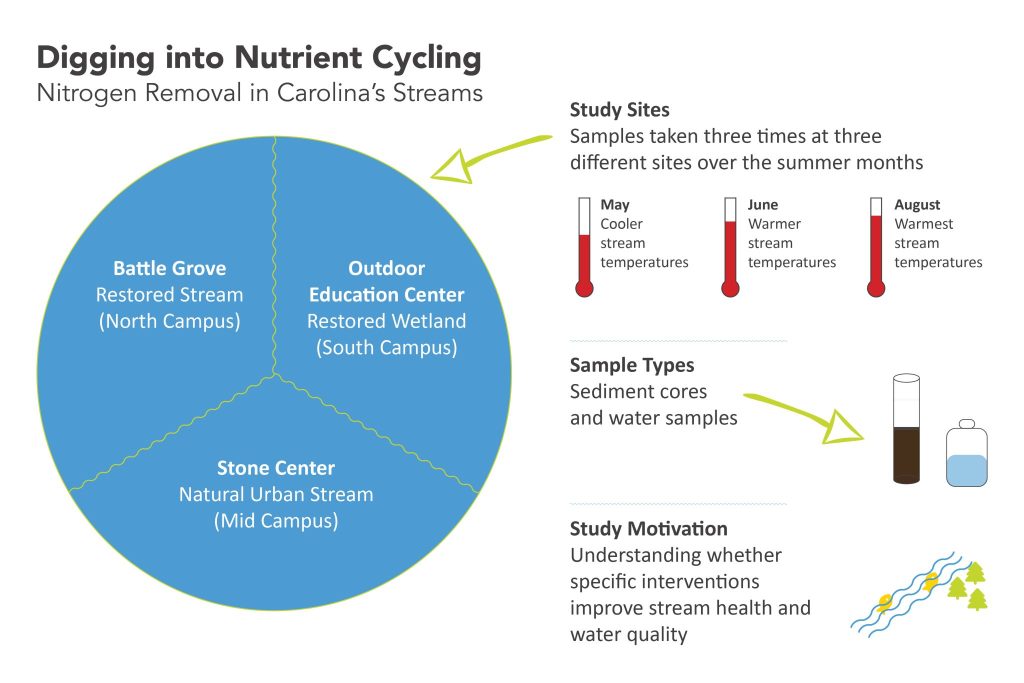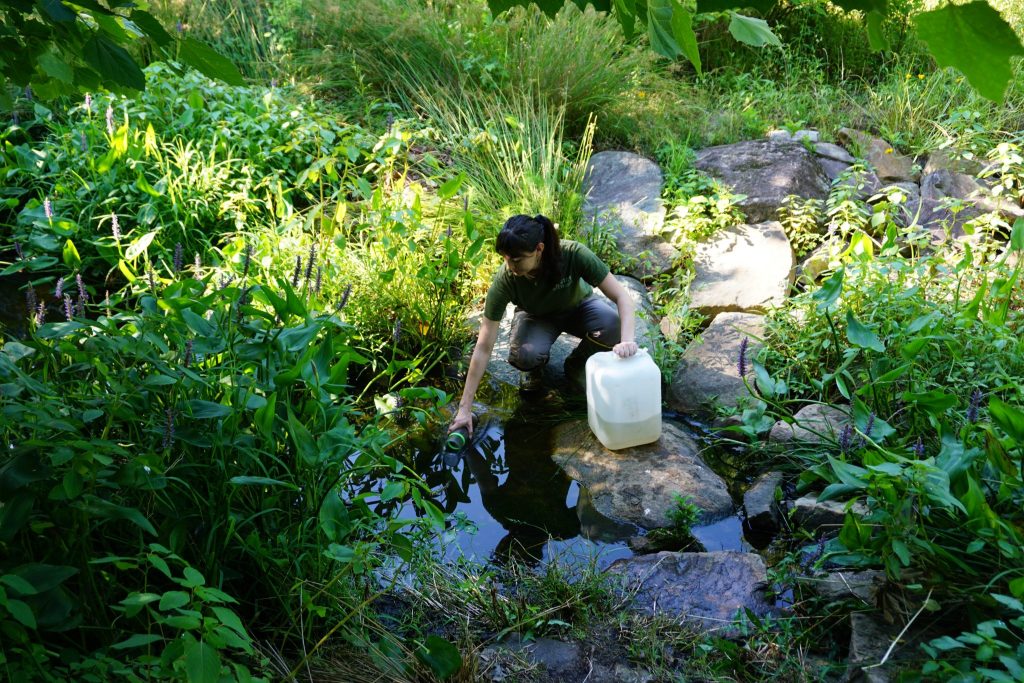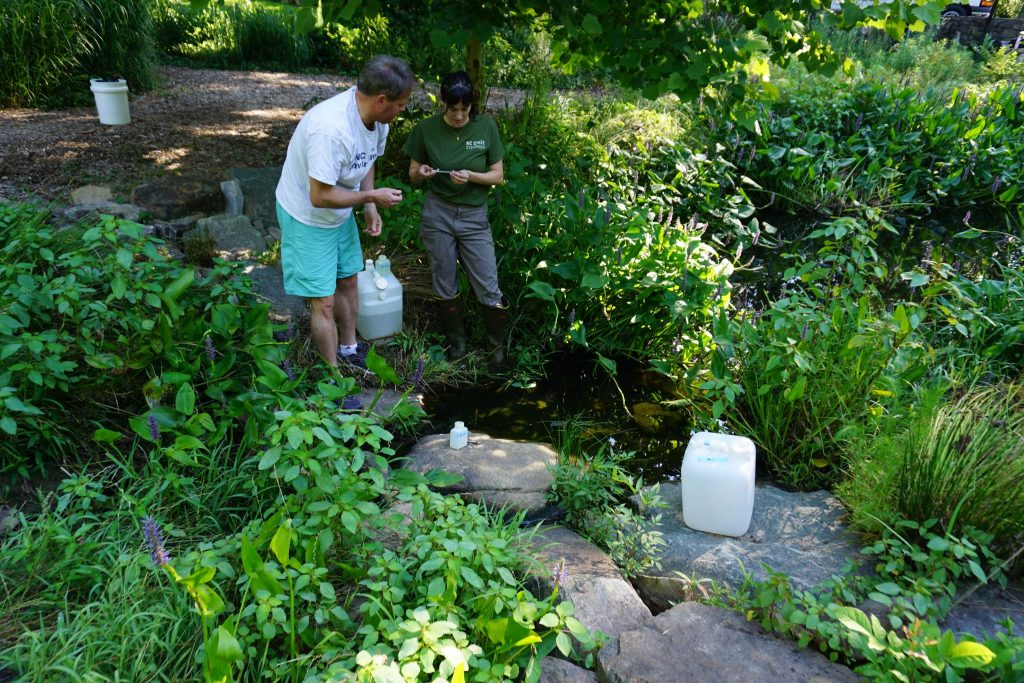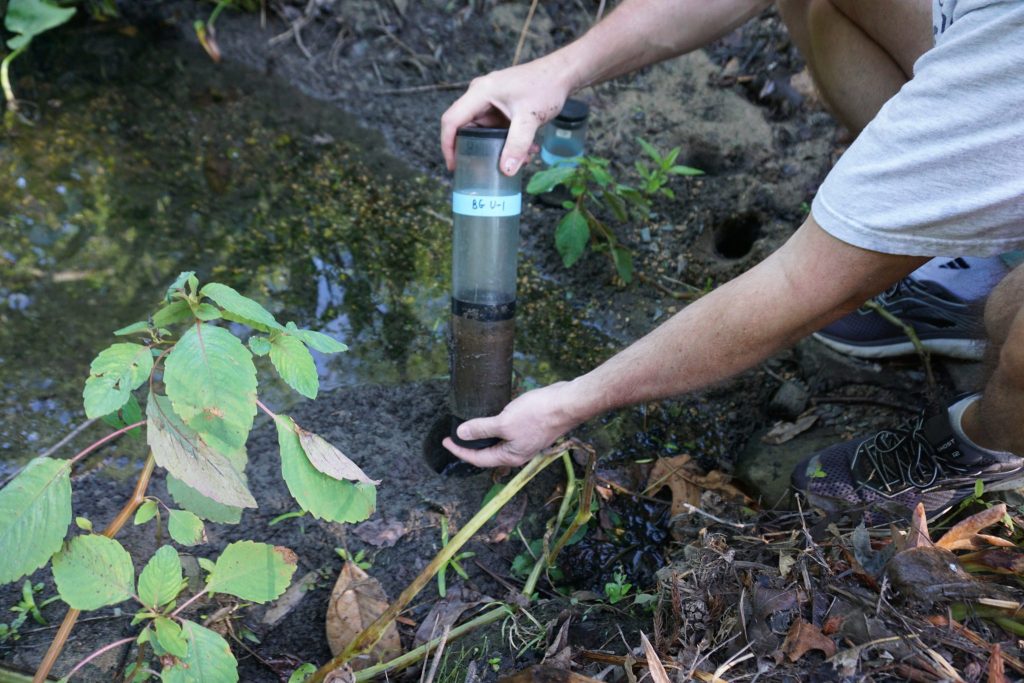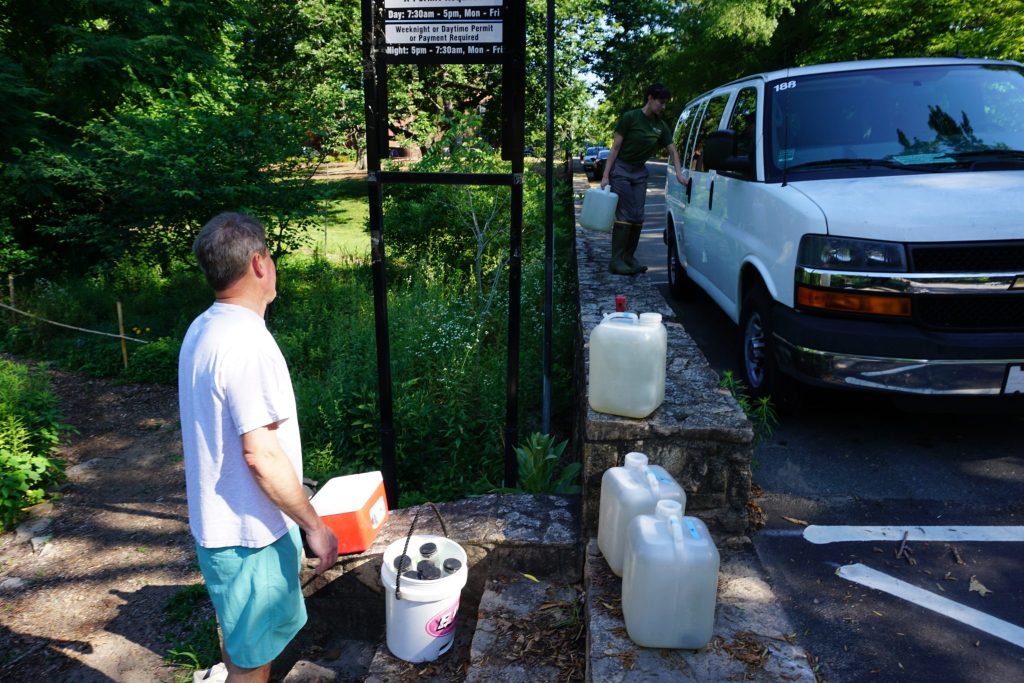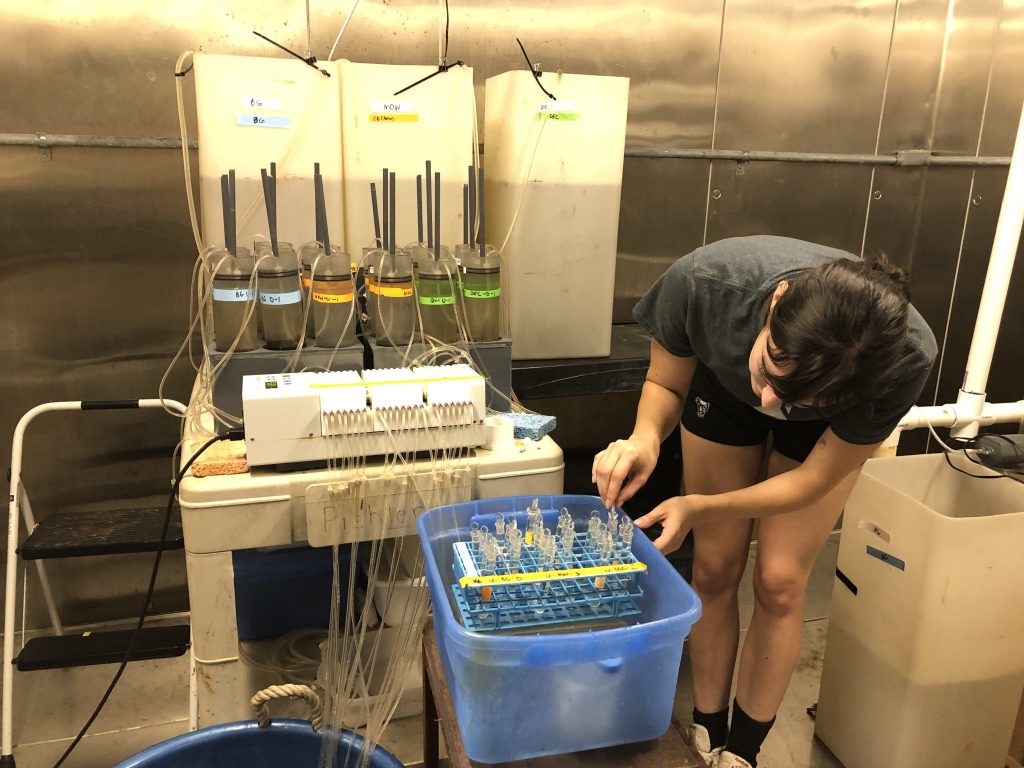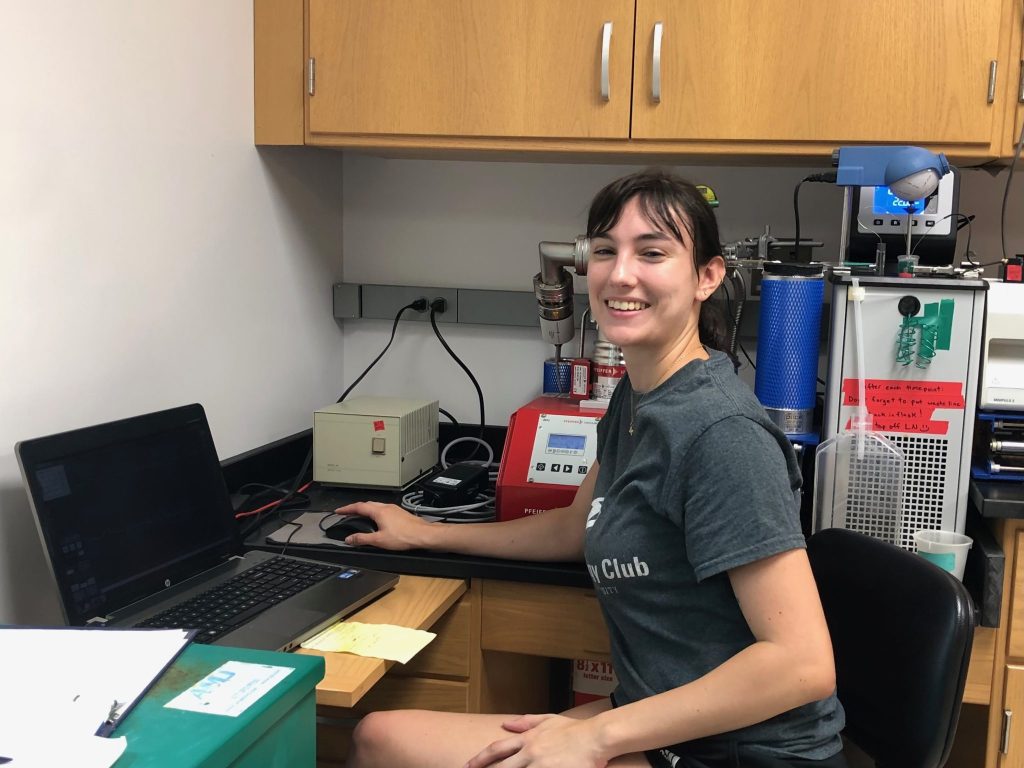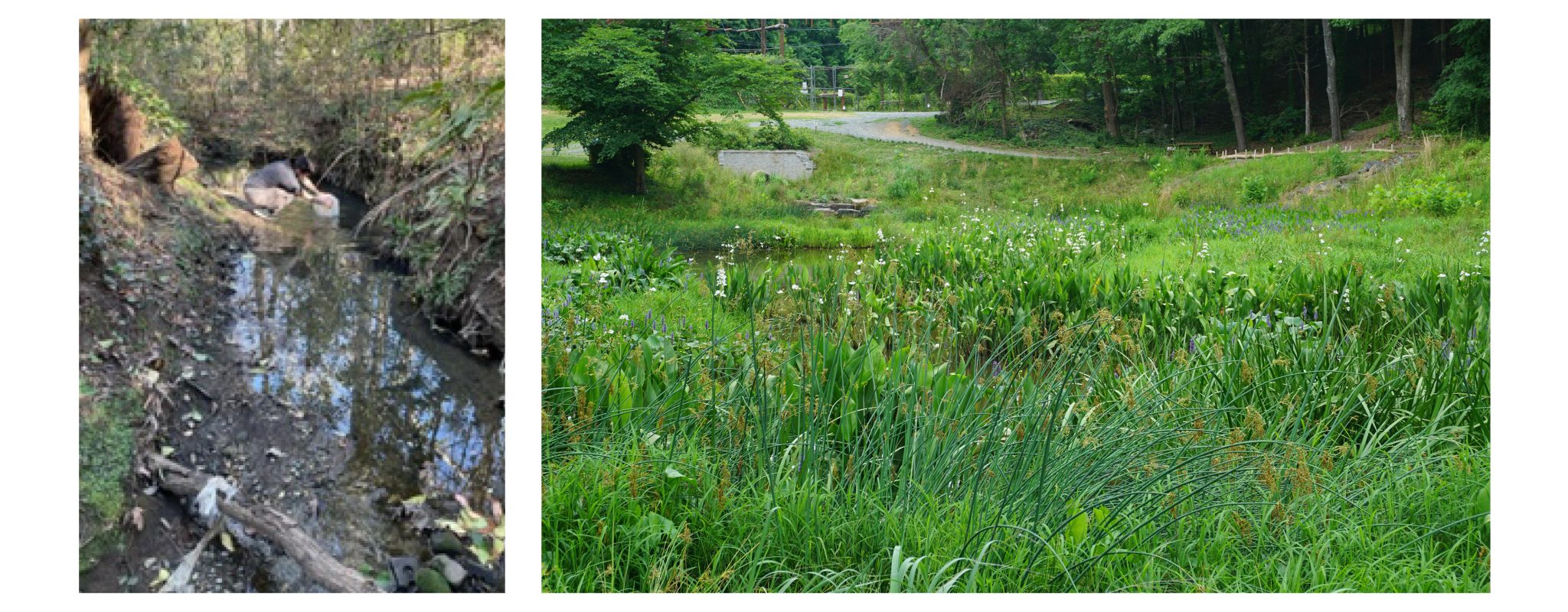After 75 years underground, Carolina’s stormwater experts brought Battle Branch Creek back to life through stream daylighting. The process slows down water and removes sediments and nutrients from the water. Since 2016 the project has thrived, but one important measurement of success has yet to be evaluated: nutrient cycling.
This summer, Martina Gonzalez Bertello, a master’s student in the Piehler Lab, is digging into nutrient cycling in streams across campus to see how well they’re removing nitrogen. Nitrogen removal is important because too much of the nutrient in a water body is pollution and can lead to excess algal growth and decreased oxygen.
The project combines Chief Sustainability Officer Mike Piehler’s expertise in stormwater and nitrogen cycling with his most recent endeavor in leading the University’s sustainability efforts.
“This work ties into Sustainable Carolina’s goal of managing the University in a way that minimizes impact on adjacent communities and the environment,” said Piehler. “The more information we have on effective interventions and status of existing streams, the better we can manage activities to sustain our critical water sources, like Jordan Lake.”
Battle Grove, sandwiched between Coker Arboretum and Forest Theatre on North Campus, is one of three campus streams where Gonzalez draws water and sediment core samples. This regenerative stormwater conveyance system, complete with steps, pools, and cobbles, is an example of a sophisticated stormwater management strategy.
Starting in spring 2022, Piehler and Gonzalez began collecting samples from Battle Grove. The project, which will collect samples from Battle Grove, Chapel Branch stream, and the Chapel Creek Wetland three times, will continue through the summer.
In addition to water samples, the team collects sediment cores from the banks of the streams. The technique used preserves the thin layer just above the sediment, which is crucial for the denitrification process. Both the water samples and sediment cores are needed to analyze denitrification in the lab.
Once they’re finished taking water samples and sediment cores, the team loads the van and heads to the next sampling location. Each location represents a different type of ecosystem. Whereas Battle Grove is an example of a sophisticated stormwater management strategy, Chapel Branch is a natural urban stream, and the Chapel Creek Wetland is a restored wetland.
Almost 200 miles away at the UNC Institute of Marine Sciences in Morehead City, the exciting part begins. Water from each stream location is pulled through their respective sediment cores and fed into vials. This mimics denitrification in the daylighted streams. Gonzalez caps the vials and prepares for denitrification analysis.
Over the past few months, Gonzalez has completed two of three rounds of analysis. During the analysis, she examines the amount of dinitrogen gas (N2) captured in the vials. Because N2 is the final product of denitrification, measuring it tells us how well the different stream systems are denitrifying.
Thus far, the experiments have demonstrated nitrogen removal through denitrification in Battle Grove, Chapel Branch (left) and Chapel Creek Wetland (right), with no clear pattern among locations. The final analyses will take place in August 2022. By sampling at three different times during the year — once when water is cool, again when it’s warmer, and finally when it’s near its peak temperature — the team will get an idea of how stormwater management strategies enhance this ecosystem service at different times of the year.
Martina Gonzalez Bertello is a graduate student studying environmental sciences and engineering in the UNC Gillings School of Global Public Health. The work described here is part of the Piehler Lab. She is a 2021 graduate of N.C. State University, College of Natural Resources, where she studied environmental technology & management.
Story by Abigail Brewer, Battle Grove photos by Melanie Elliott.

